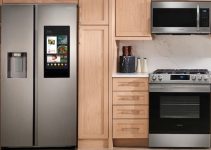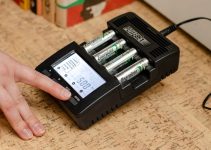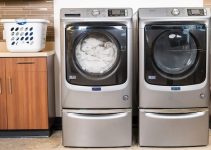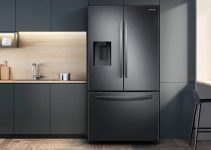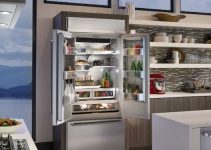Temperature problems are among the commonest issues people face with Samsung fridge-freezers. And most of the time, failure to cool or freeze is the issue.
Although reaching out to a repair expert is the first thing that usually comes to mind when your Samsung fridge-freezer has temperature issues, there are times when the issue so simple that you can figure the cause and fix it on your own.
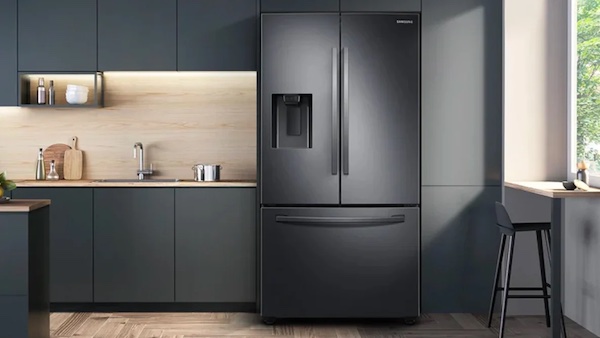
Samsung Fridge-freezer Temperature Problems
Here we’d be looking at some of the most likely causes of temperature problems in Samsung fridge-freezers and how you can DIY-fix the problems after figuring the cause on your own.
Now, let’s cut to the chase.
Problem 1: Samsung Refrigerator Not Cooling
Your Samsung refrigerator may not be cooling for several reasons. You may be able to remedy certain issues on your own, but others may need to be checked out by a professional. Some of the reasons for this include the following;
- The appliance is not plugged in properly
- The door is not closed properly
- Door seals are dirty
- Direct sunlight or heat sources close to the refrigerator.
- Food is packed too tight
- Not enough space from the wall
- Wrong temperature
- The refrigerator is in Demo Mode
The appliance is not plugged in properly
It’s always a good idea to check the obvious first when troubleshooting a malfunctioning device. Make sure the plug in your refrigerator is secure. Pull the plug out of the socket, give it a good shake, and then plug it back in. After this, you should examine the socket itself. Easy enough; unplug the fridge, try the outlet with something else, and see if the power returns.
The door is not closed properly
Make sure your refrigerator door is closing tightly; if the air is leaking out, the refrigerator will not cool properly. Rubber or PVC seals and gaskets on the refrigerator door and its opposing or closing surface should be inspected for cracks, wear, or damage; if any are found, they may need to be replaced to solve the cooling problem.
Door seals are dirty
Make that the door seals aren’t damaged, unclean, or showing signs of wear and tear. Lack of cleanliness in the seals can result in substantial air leaks to compromise the cooling effect. A refrigerator may need up to 24 hours to return to its normal temperature once frost or dirt has been removed from the seals or gasket.
If the seals are broken, maintenance will be necessary. Check the gasket that’s on the flap door of the refrigerator.
Direct sunlight or heat sources close to the refrigerator.
To prevent the refrigerator from overheating, relocate it if it is in direct sunlight or close to another heat source (such as a stove). If you are unable to relocate your refrigerator, the temperature settings for both the refrigerator and freezer must be lowered. Keep in mind that the warmer it is outside (in the summer, for example), the lower the temperature setting on your refrigerator should be to retain the same level of cooling inside.
Wrong temperature
We’ve all done it: mistakenly pushed or bumped the fridge’s temperature dials, resulting in inadequate cooling. You may need to adjust the settings or the screen to return to normal. For Samsung refrigerators, the ideal refrigerator temperature is below 38 degrees Fahrenheit, and the ideal freezer temperature is below -2 degrees Fahrenheit.
Not Enough space from the wall
Reduce the distance between the back of the fridge and the wall by repositioning the appliance. There must be at least one inch of space between the back of the fridge and the wall.
Food is packed too tight
If you have too much in your Samsung refrigerator, or if any of the objects in your refrigerator are blocking the air vents or ducts, the refrigerator will not cool as efficiently as possible. Ensure your food isn’t blocking your refrigerator’s cold air vents and that your products are spaced out sufficiently to allow for free air circulation.
The refrigerator is in Demo Mode
If your refrigerator is turned on and plugged in but is still not producing cold air, you may have left it in “demo” mode. If your Samsung refrigerator of the Type A variety is still in demo mode, you’ll see ‘OF FF’ shown on the screen. If a Samsung refrigerator of type B is still in demo mode, the icon for demo mode will be illuminated on the refrigerator’s display.
Look at the control panel to learn how to turn off the demonstration mode on your refrigerator. You’ll find a pair of vertically stacked buttons on the far left. The one on top is labeled “Power Freeze,” and the one beneath it says “Freezer.” If you press and hold these buttons for three seconds, the refrigerator will restart.
Problem 2: Faulty Condenser Coils
The condenser coils on a Samsung refrigerator may be horizontally positioned on the appliance’s rear or recessed into the bottom of the cabinet at the back of the appliance. The condenser coils’ performance will suffer if they are dirty or dusty.
Samsung suggests using the crevice tool on your vacuum to reach those hard-to-reach areas. After you’ve vacuumed up the dust and dirt, wipe off the condenser coils with a moist cloth to ensure that nothing is left behind.
Is The Condenser Fan Motor Faulty?
If you’re doing this, unplug the refrigerator first. The refrigerator will not be cooled if the condenser fan motor is blocked or not working. Ensure the fan motor blades can spin freely without being blocked by anything else; otherwise, the fan will not function properly.
Once that is confirmed, you can try manually turning the blade. Replace the condenser fan motor if the blades are stuck or not turning freely.
The fan motor can be checked for continuity with a multimeter if the blade can be turned freely by hand and there are no impediments in its path. The refrigerator, at this point, must be plugged into an electrical outlet; do so, but remember to keep your hands away from the spinning blades of the compressor at all times. If the electrical current isn’t flowing freely through the fan motor, you may need a new one. If you consider yourself “handy,” you can do this independently, but if you want a professional fix, you can find a Samsung store or repair center near you.
Conclusion
It is not a permanent problem that the Samsung refrigerator is not cooling since this is something that can be quickly fixed by just performing diagnostic checks on the components that are suspected of malfunctioning.
